
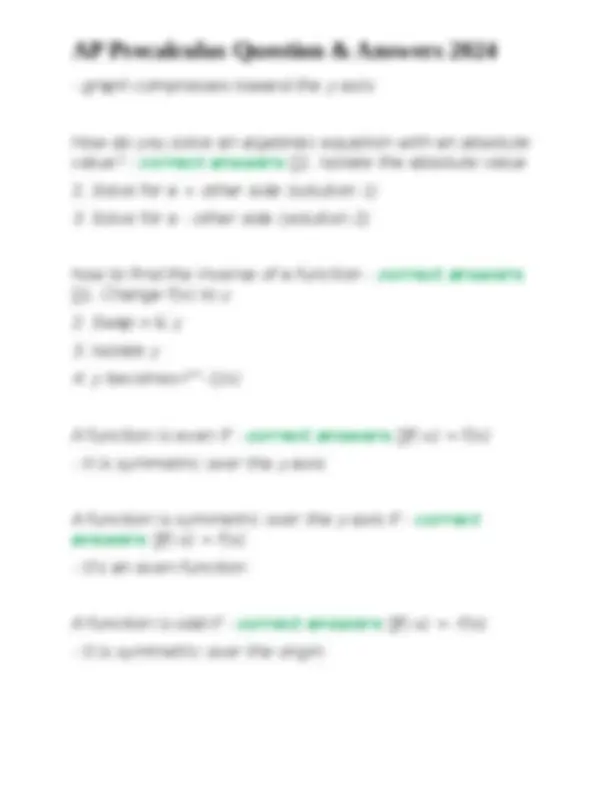
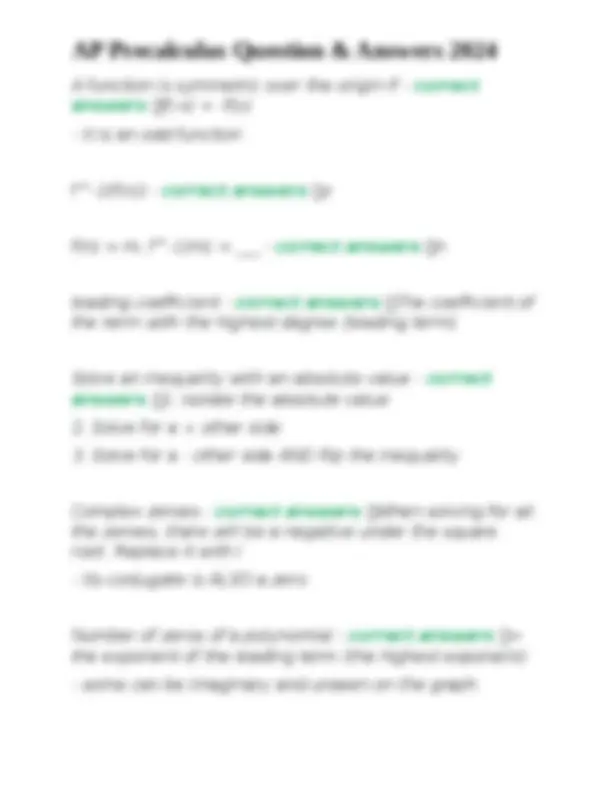
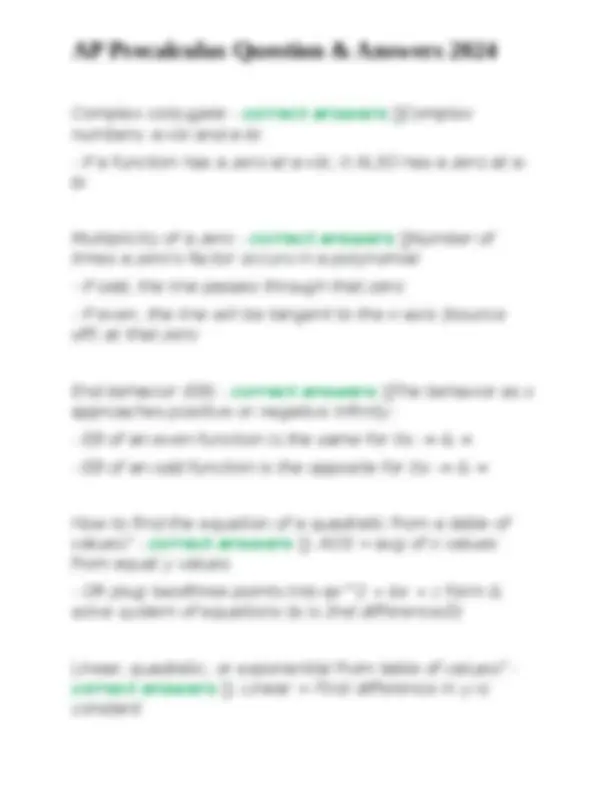
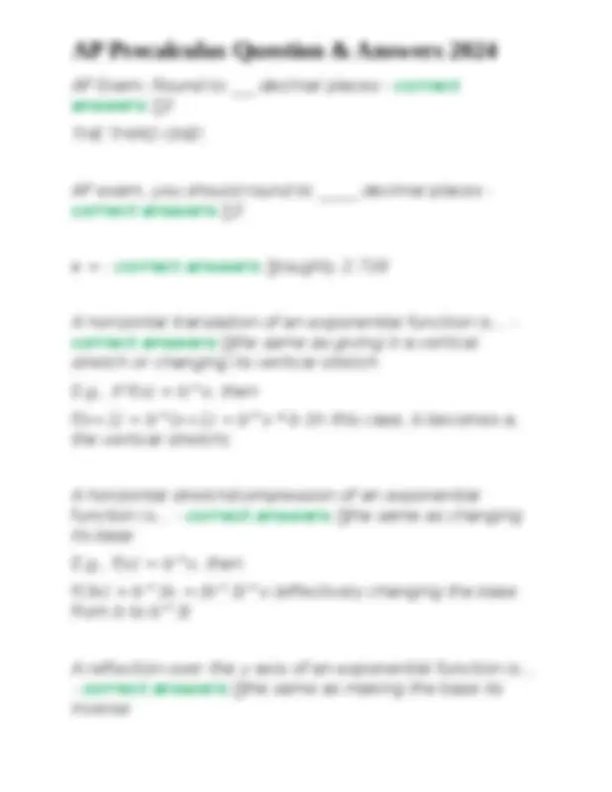
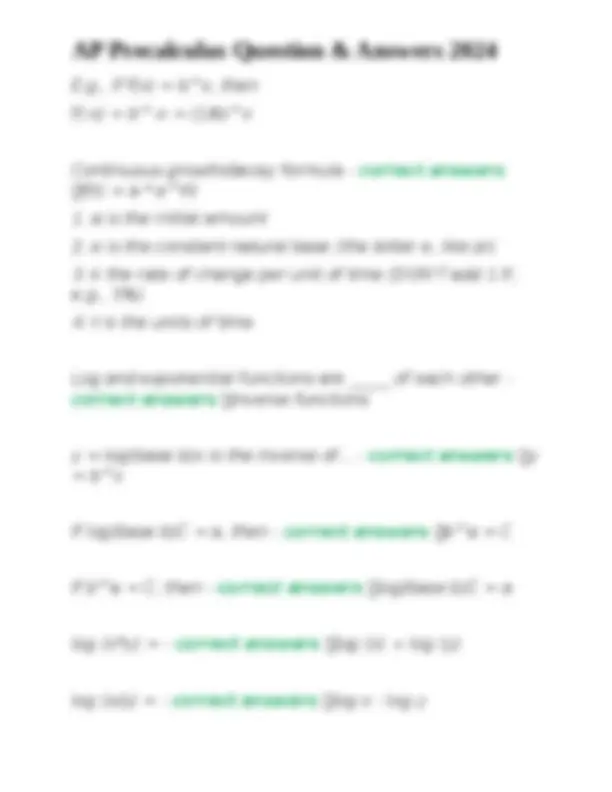
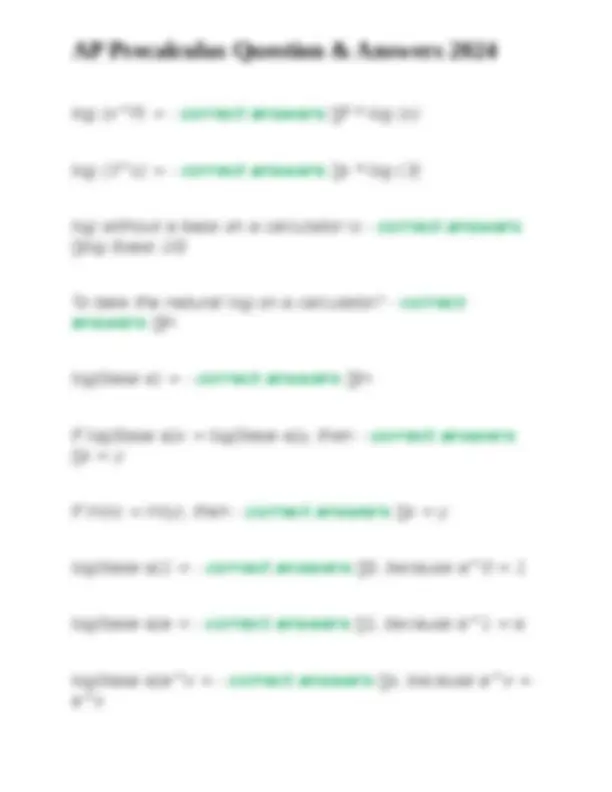
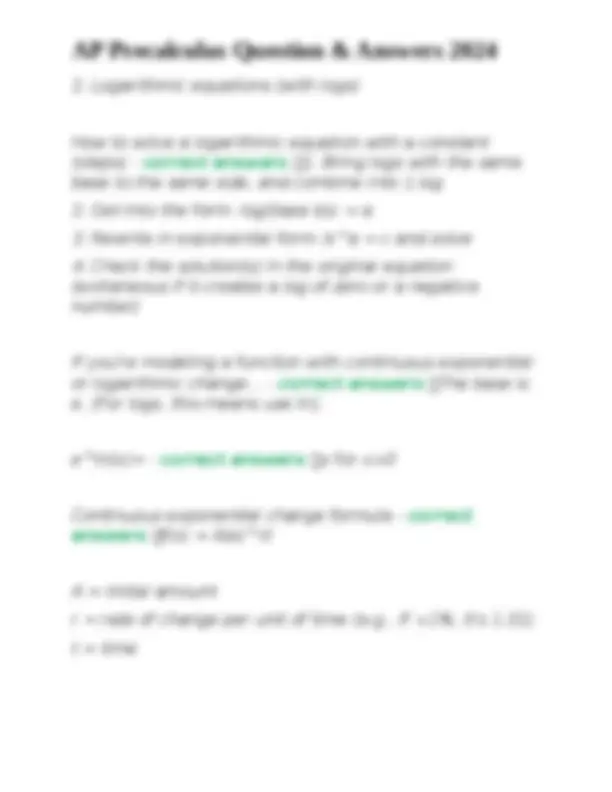
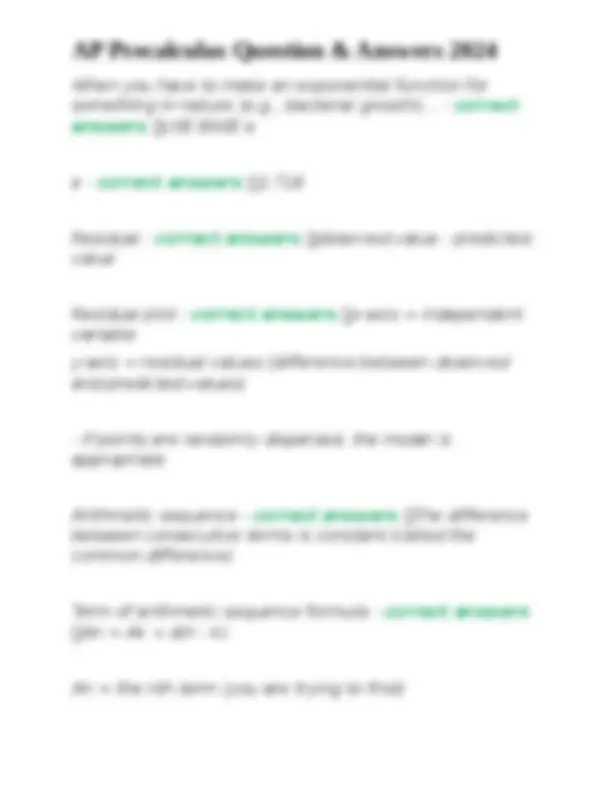
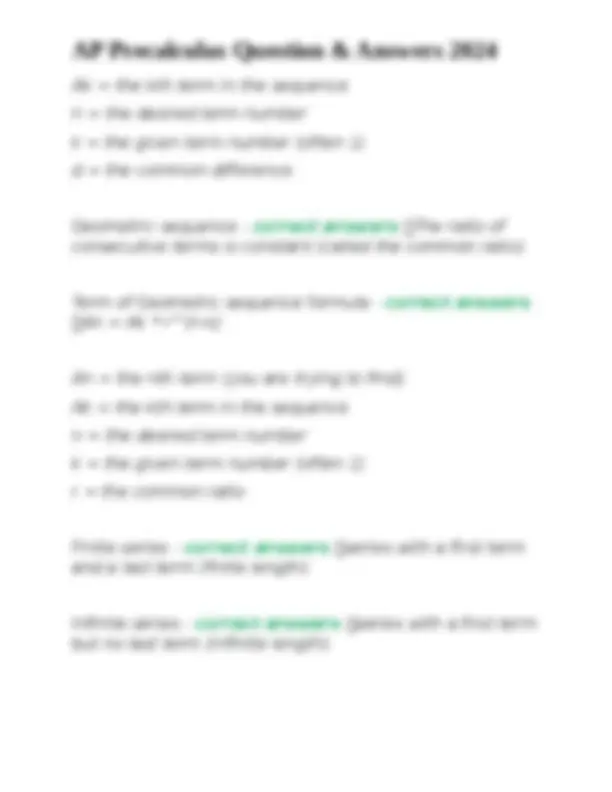
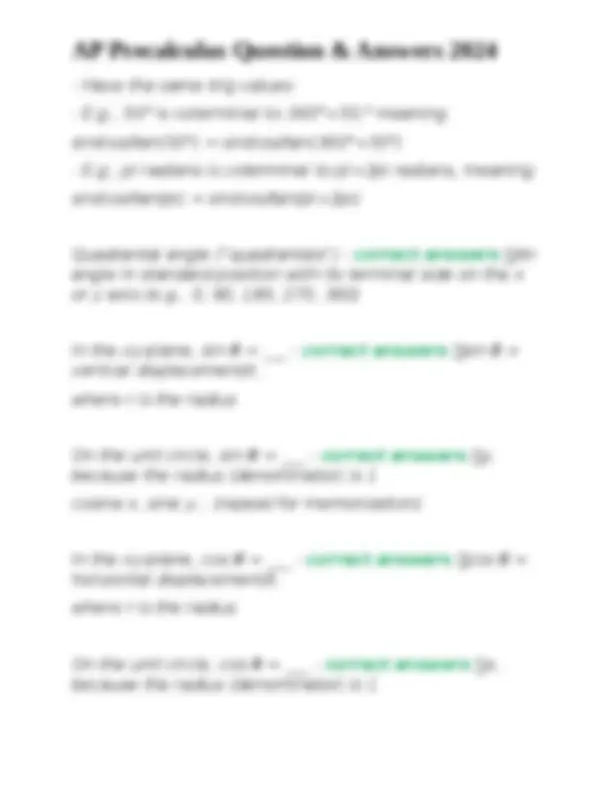

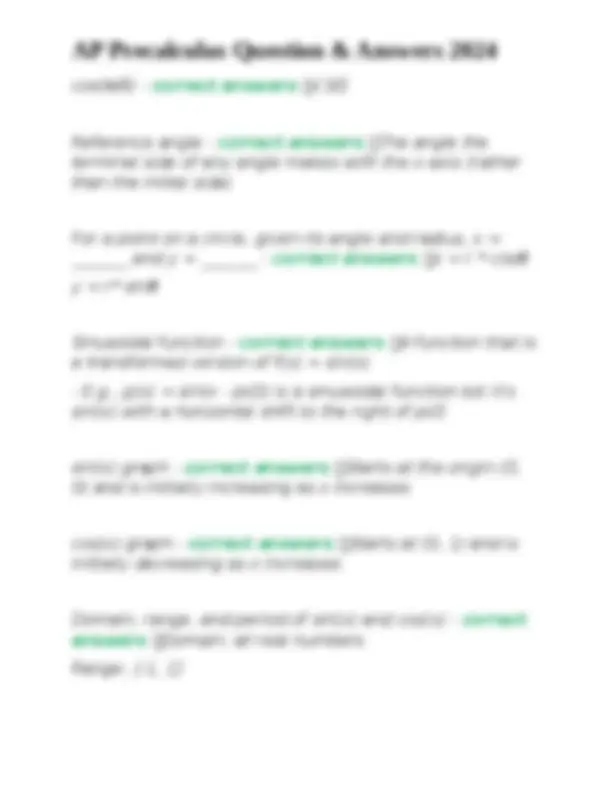
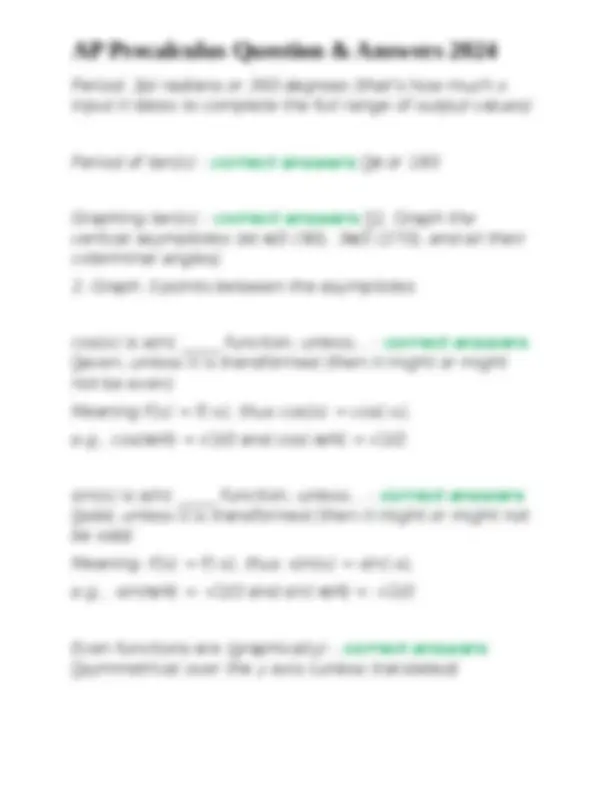

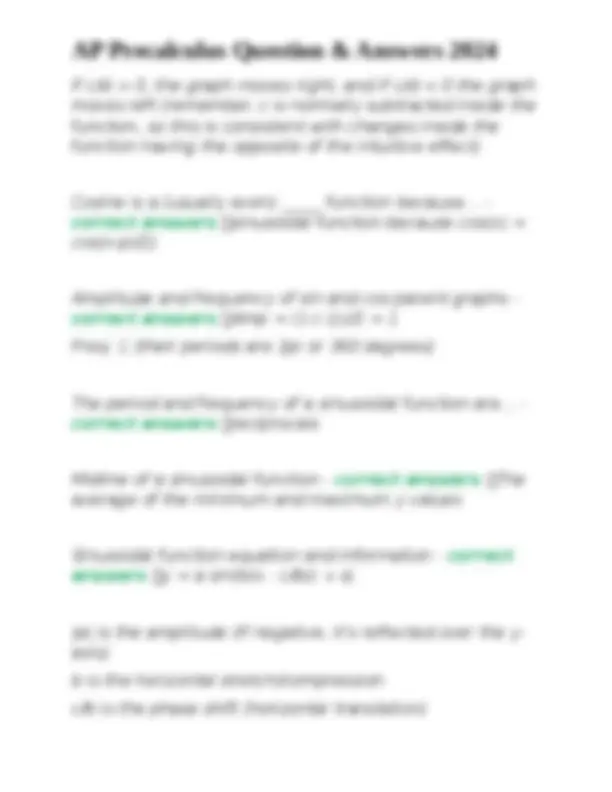
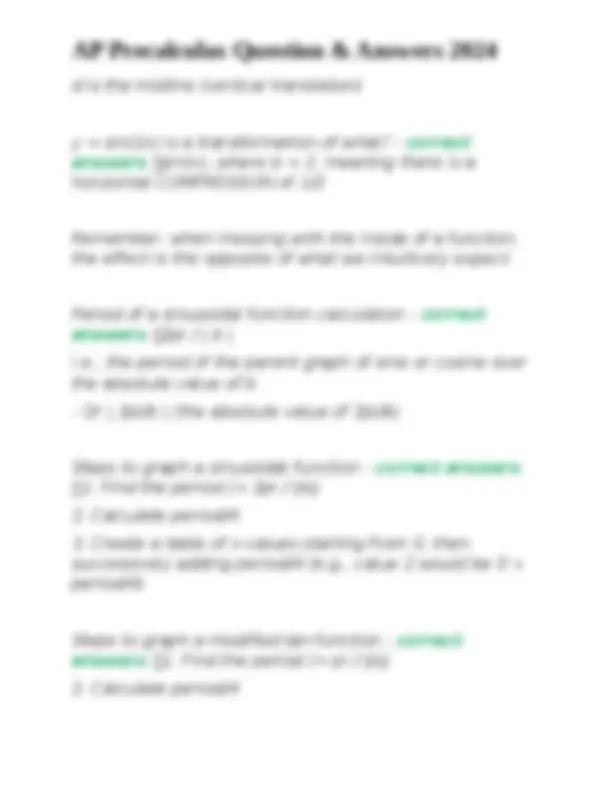



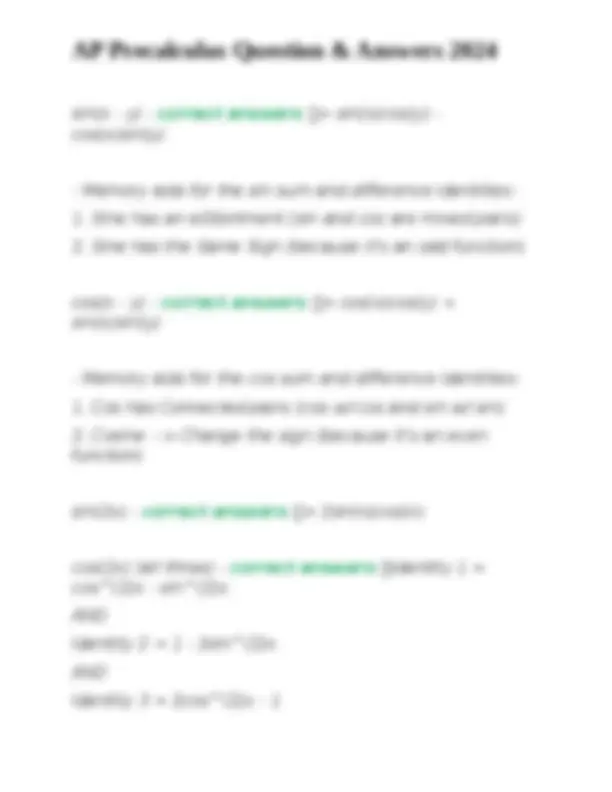


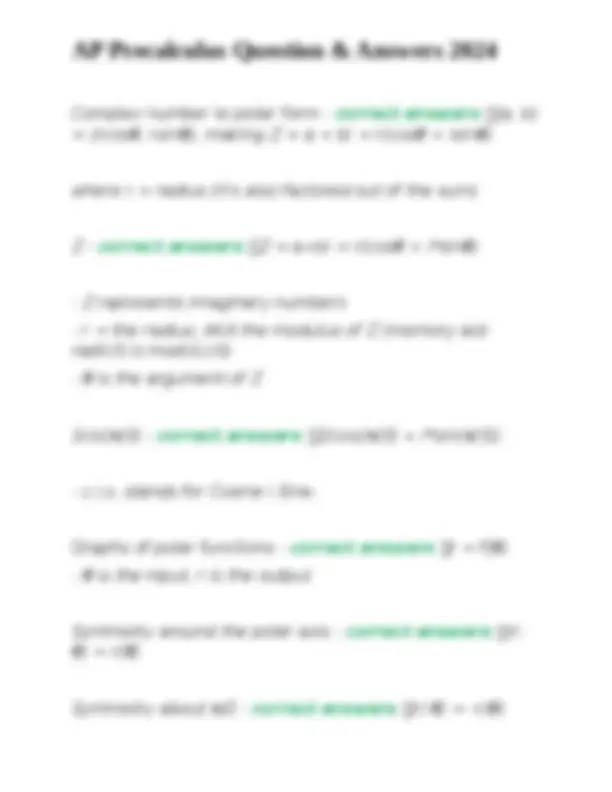
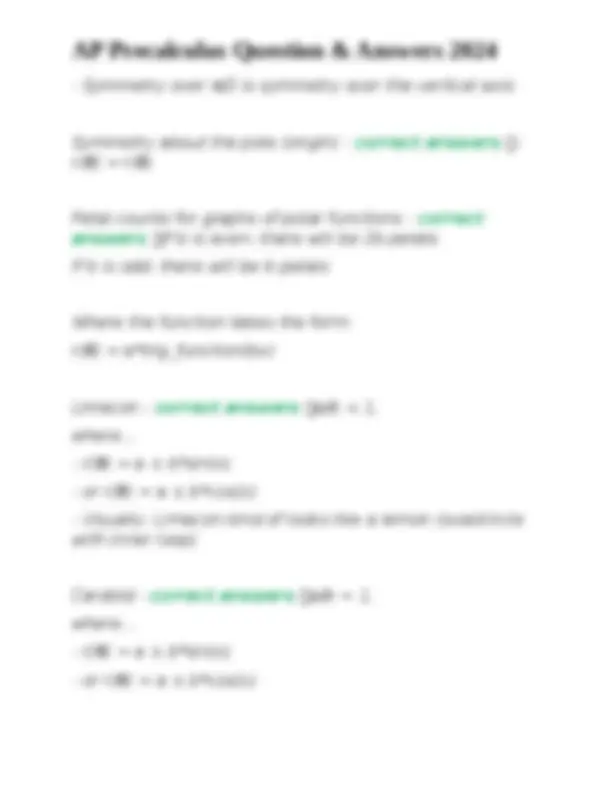
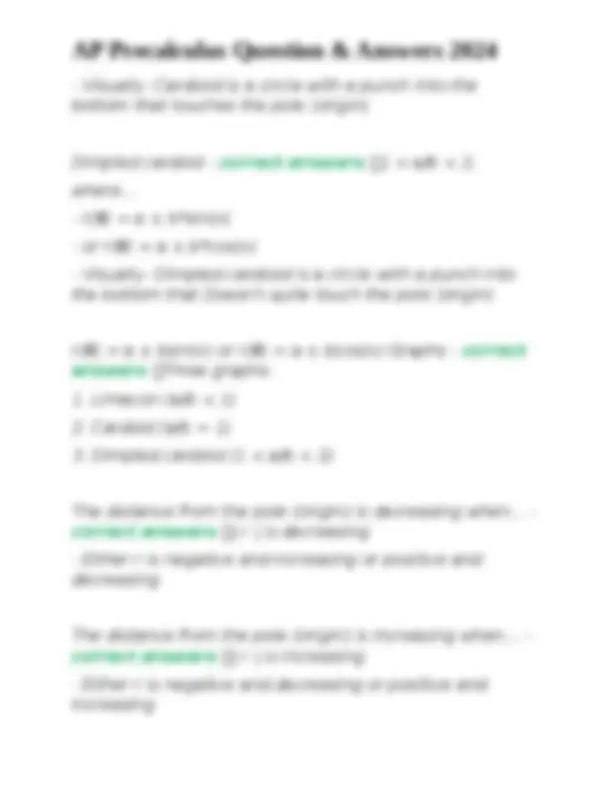
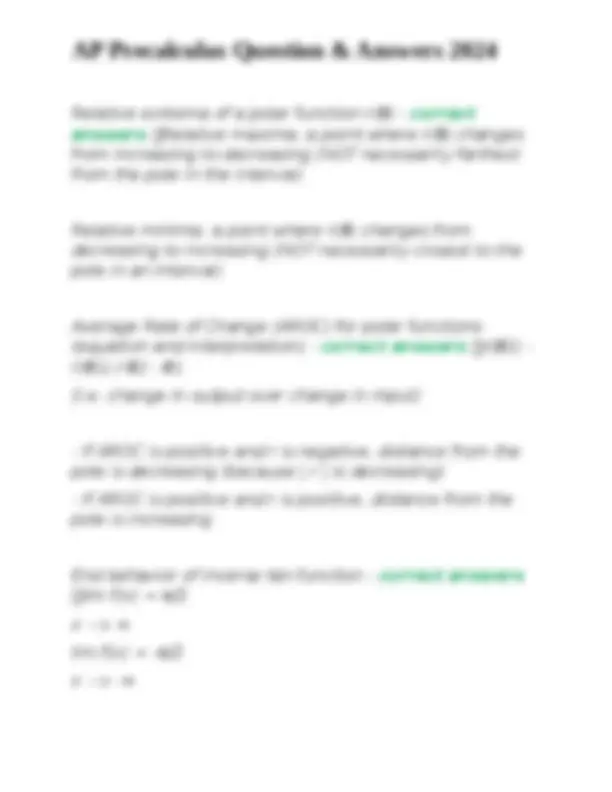




Study with the several resources on Docsity

Earn points by helping other students or get them with a premium plan


Prepare for your exams
Study with the several resources on Docsity

Earn points to download
Earn points by helping other students or get them with a premium plan
Community
Ask the community for help and clear up your study doubts
Discover the best universities in your country according to Docsity users
Free resources
Download our free guides on studying techniques, anxiety management strategies, and thesis advice from Docsity tutors
Answers to various questions related to ap precalculus, covering topics such as one-to-one functions, function properties, exponential and logarithmic functions, sequences and series, trigonometry, and polar coordinates. It includes formulas, examples, and explanations to help students understand and solve problems in ap precalculus.
Typology: Exams
1 / 36

This page cannot be seen from the preview
Don't miss anything!





























One-to-one function - correct answers ✅each x value pairs to exactly one UNIQUE y value
Point where concavity changes (CU to CD or CD or CU) Asymptote - correct answers ✅a line that a graph approaches but never crosses Asymptote(s) of an exponential function - correct answers ✅horizontal Asymptote(s) of a logarithmic function - correct answers ✅vertical Vertical stretch - correct answers ✅the whole function, f(x), is multiplied by a (where a > 1) Vertical compression - correct answers ✅the whole function, f(x) is multiplied by a (where a is a fraction: 0 < a < 1) Horizontal stretch - correct answers ✅- x is multiplied by a (where a is a fraction: 0 < a < 1)
A function is symmetric over the origin if - correct answers ✅f(-x) = -f(x)
Complex conjugate - correct answers ✅Complex numbers: a+bi and a-bi
coefficients, then every rational zero of f(x) takes the form:
coefficient) Rational function - correct answers ✅R(x) = f(x)/g(x) f(x) is a polynomial or monomial/constant g(x) is a polynomial & not 0 End behavior of a rational function - correct answers ✅1. Numerator degree > denominator degree:
AP Exam: Round to ___ decimal places - correct answers ✅ 3 THE THIRD ONE! AP exam, you should round to _____ decimal places - correct answers ✅ 3 e = - correct answers ✅roughly 2. A horizontal translation of an exponential function is... - correct answers ✅the same as giving it a vertical stretch or changing its vertical stretch E.g., if f(x) = b^x, then f(x+1) = b^(x+1) = b^x * b (in this case, b becomes a, the vertical stretch) A horizontal stretch/compression of an exponential function is... - correct answers ✅the same as changing its base E.g., f(x) = b^x, then f(3x) = b^3x = (b^3)^x (effectively changing the base from b to b^3) A reflection over the y axis of an exponential function is...
log (x^P) = - correct answers ✅P * log (x) log (3^x) = - correct answers ✅x * log (3) log without a base on a calculator is - correct answers ✅log (base 10) To take the natural log on a calculator? - correct answers ✅ln log(base e) = - correct answers ✅ln if log(base a)x = log(base a)y, then - correct answers ✅x = y if ln(x) = ln(y), then - correct answers ✅x = y log(base a)1 = - correct answers ✅0, because a^0 = 1 log(base a)a = - correct answers ✅1, because a^1 = a log(base a)a^x = - correct answers ✅x, because a^x = a^x
log(base x) of ≤ 0 - correct answers ✅does not exist (gives a calculation error) Natural vs. common log - correct answers ✅Natural = base e Common = base 10 The change of base formula - correct answers ✅log(base b)x = log(x)/log(b) The same is true for any base on the right side as well, including e (the natural log (ln)) How to find the domain/range of the inverse of a function
When you have to make an exponential function for something in nature (e.g., bacterial growth)... - correct answers ✅USE BASE e e - correct answers ✅2. Residual - correct answers ✅observed value - predicted value Residual plot - correct answers ✅x-axis = independent variable y-axis = residual values (difference between observed and predicted values)
Sequences vs. functions - correct answers ✅sequences are discrete; functions are continuous Period (english definition) - correct answers ✅The domain (x-value interval) required to complete a full cycle of a periodic function Period (mathematic condition) - correct answers ✅A period must be the smallest value K such that f(x+K) = f(x)
Trig functions are ______ functions - correct answers ✅periodic Standard position - correct answers ✅An angle with its vertex at the origin and its initial side fixed on the positive x-axis Initial vs. terminal side - correct answers ✅Initial: The fixed side that does not rotate Terminal: The non-fixed side that rotates Terminal side rotation - correct answers ✅- If it rotates clockwise (starting into negative y values), the angle is negative
cosine x, sine y... (repeat for memorization) On the unit circle, tan θ = ___ - correct answers ✅tan θ = m = y/x = sin θ/cos θ where the terminal side and the unit circle intersect at (x, y) because the hypotenuse (radius) = 1 Formula for finding point P using the radius and angle - correct answers ✅(r * cosθ, r* sinθ) Formula for the slope of a terminal ray - correct answers ✅sinθ/cosθ (which also equals tanθ) sin(π/4) - correct answers ✅√2/ sin(π/3) - correct answers ✅√3/ sin(π/6) - correct answers ✅1/ cos(π/4) - correct answers ✅√2/ cos(π/3) - correct answers ✅1/
cos(π/6) - correct answers ✅√3/ Reference angle - correct answers ✅The angle the terminal side of any angle makes with the x-axis (rather than the initial side) For a point on a circle, given its angle and radius, x = _______ and y = _______ - correct answers ✅x = r * cosθ y = r* sinθ Sinusoidal function - correct answers ✅A function that is a transformed version of f(x) = sin(x)